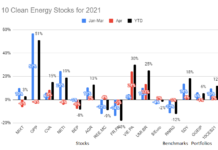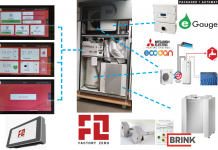Opportunity
On
I am relieved to say that I am not a permabear, and that the market as a whole now seems to me to be fairly valued. Some sectors and many stocks are still overvalued, but bargains are there for those who look. I don’t know where the market will go from here, but I now feel that we’ve seen the worst of what is likely to happen, even if the market has farther to fall. We have just seen two weeks where the largest investors in the market have been forced to sell everything they could in order to meet margin calls and cover debts. The wildcard is how long such distress selling will continue.
Anyone who currently has cash on hand and the courage to buy is in an enviable position. Selling has been indiscriminate, with the best companies being sold as hard as the worst. Now is the time to begin buying quality companies at a large discount to their true value. Forced selling may continue for a while yet, but fundamental buyers are beginning to move into the market, and the best companies may never be this cheap again.
Buy Carefully
I am not calling a bottom here for the market as a whole. I would not be surprised if the Dow falls as low as 7000, but I do think that the current mispricings from forced selling are as extreme as they are likely to get. Now is not the time to buy a market index, be it a general market fund, or a green mutual fund or ETF.
It is extremely timely that I have already begun a series of articles looking into companies which help people and businesses save money by using energy more efficiently. Energy Efficiency seems to be the most likely alternative energy sector to benefit from an extended recession or depression. With that said, I will continue my look into the liquidity of companies in the Wise Energy Use Index. A liquidity screen is a good way to quickly eliminate companies from consideration before you’ve wasted too much time researching them.
Wise Energy Use Stocks, Part 2: Lighting
Philips (NYSE: PHG). Philips is a long time favorite of mine, has a current ratio of 1.7, and operating cash flow of $1.7 Billion. With $3.3 Billion on hand, Philips may be able to continue their acquisition of other lighting firms at reduced prices, and cement their world leadership in efficient lighting. Energy efficient lighting upgrades typically have paybacks of less than two years, and are a staple of utility demand side management programs.
Cree, Inc. (NASD: CREE). Cree is a leader in bright white LEDs. With no debt, and a current ratio of over 4, operating cash flow of $312 million, Cree should be able to weather a financial storm, despite trouble at a major customer. Cree may even use its healthy balance sheet for a small acquisition or two.
Lighting Science Group (LSCG.OB). Lighting Science is a manufacturer of LED fixtures, including replacements for normal incandescent household bulbs. Although the industry is poised for explosive growth in 1-2 years as costs fall, Lighting Science may not survive to benefit. The company has a marginal current ratio of 1.35, but their twelve month operating cash loss of $19M is far in excess of both their current assets less current liabilities and cash on hand ($2.8M.) Despite recent good news in a patent case with Philips, and resolution of a dispute with the former CEO, Lighting Science will be in a bind if credit markets continue to be tight.
According to Bill Paul of Energy Tech Stocks, the company is in his Wise Energy Use Index because it is in a great industry, and a rising tide floats all boats. That had been my reasoning when I bought the company for myself, and recommended it as a speculative play in 2008, but now I think that a rising tide only floats those boats that don’t sink first. I decided to sell my stake while writing this article.
Philips may consider buying Lighting Science now that they have been stymied in their patent dispute, but holders of the stock should not count on this to raise the stock price significantly. Just as Barclays chose to wait and buy Lehman’s core assets out of bankruptcy, a potential acquirer of Lighting Science might also choose to wait for the LED Light Bankruptcy Special. Other potential acquirers include Cree, Osram Sylvania, a division of Siemens (NYSE:SI), and General Electric (NYSE:GE).
DISCLOSURE: Tom Konrad and/or his clients own PHG, CREE, GE, and SI.
DISCLAIMER: The information and trades provided here are for informational purposes only and are not a solicitation to buy or sell any of these securities. Investing involves substantial risk and you should evaluate your own risk levels before you make any investment. Past results are not an indication of future performance. Please take the time to read the full disclaimer here.









Hi Tom,
Do you know anything about this lawsuit that is being filed against Philips? Could it have long term effects or is it just another minor piece of news?
http://sev.prnewswire.com/household-consumer-cosmetics/20081009/NY3802009102008-1.html
I think this is rather de minimis for Philips, although it was a very big deal for LSCG, also discussed in this article.
This lawsuit was originally filed by Philips, and my guess was always that they never had a case… LSCG may countersue, and may win an award, but the whole thing is likely to be a minor issue for Philips.
If it does turn out to be serious, Philips may just resolve the whole matter by buying LSCG outright. Lighting science has a market cap of $85 Million, while PHG has over $3 Billion in cash on hand.
Historically CREE shows modest revenue growth, negative earnings growth, and current P/E is over 50. So unless it starts to take off more than it has in the last 4 quarters then it’s a pretty expensive proposition.
Phillips is showing earnings falling about 25% Q4 2008 over Q4 2007 and overall fall of 50% for fiscal year 2008 over fy 2007, and 2007 was lower than 2006. BUT I think that fact is well priced in and then some by a supercheap P/E of around 5 right now. And I think the risk of Philips failing is low, given that big cash cushion.
Cree is defintiely riskier than PHG, but I don’t think P/E is currently meaningful for very many companies… cashflow compared to debt is much more important.
Revenue growth in LEDs is poised to take off as they become cost competitive with other types of lighting. That’s the justification of the high Creee P/E. Justification enough? the market will be the judge (and a hanging judge, recently)
I also am unimpressed with Lighting Science. It looks like their bulbs are the same as others coming from China and they don’t really have anything that isn’t available from other sources. They seem to have good technicians but as far as products, from my experience, the same items are available for less elsewhere.
Robert: although I have sold LSCG, I don’t agree with your reasoning. The technical skills and patents for assembling a good LED fixture are quite valuable… it’s quite difficult to manage bot the heat and light output of LEDs in high intensity lighting applications.
Consumers are likely to discover with LEDs, just as we discovered with CFLs, that quality matters a lot, and many of the LED bulbs on the market do not have nearly the advertised lifetimes.
My info comes from Philips in two ways. First, if LSCG has nothing of value, why was Philips suing them? Second, according to a presentation of Jay Shuler, a marketing exec at PHG, the trickiest application for LEDs will be replacing standard household bulbs, because of heat management. (See CPV and LEDs article)
Comments are closed.